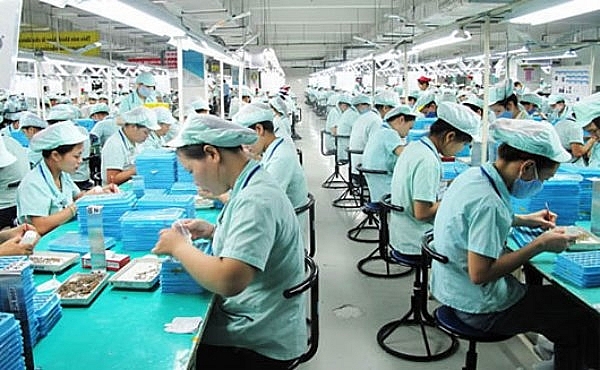Migrant workers affect economic restructuring of Vietnam
 |
| A very large part of migrant workers are women |
The report on "Gender issues in domestic migration and economic restructuring in Vietnam" carried out by the Central Institute for Economic Management (CIEM) under the support of Aus4Reform and Australian Aid highlighted that the feminisation of migrant workers continues. The ratio of females in migrant labour remains high, despite the decreasing trend.
Researchers from CIEM outlined that the population migration from rural to urban areas is mainly caused by "economic demand". In Vietnam, up to 85 per cent of migration decisions involve economic reasons.
It is also caused by conditions of departures and destinations. The "push" in the departures comes from the lack of arable land, joblessness, low incomes, and the "attraction" of the destination because of higher incomes and easier employment. Migrant workers expect far higher salaries than at their hometown, even when calculating expenses for transport and other overheads.
The report also pointed out that payment for labour in industrial zones and the industry sector in general in urban areas is usually a few times higher than in agriculture. So, people living in rural areas who are unemployed or earn low incomes, will easily decide to move and find new opportunities and new jobs.
The report also said that domestic migration is essential for development, enabling localities to strengthen their resources to restructure the economy, while also putting pressure on infrastructure and social welfare systems. Migrant workers are a key factor and a driving force of socioeconomic development. Migration contributes to the redistribution of the population, restructuring of the labour structure, creating jobs, and removing poverty. This is also part of the government's sustainable socioeconomic development strategy.
Localities that are promoting industrialisation and services have high demand for labour, luring in migrant workers, especially women. On the other hand, in the localities that are slow in economic restructuring and still focus on agriculture, more people emigrate then immigrate, leading to net migration rate.
The feminisation of migration is also causing social issues, particularly regarding accommodation, along with public services, security, safety, entertainment, and schooling for their children.
Meanwhile, most businesses cannot provide enough accommodation and relative services to their workers as all of their investment goes into production facilities. Thus, employees have to hire apartments outside the production site. Sometimes businesses organise a bus shuttle to bring workers to the factory every day. Additionally, policies related to housing for employees have yet to be built, and businesses have yet to be forced to fulfil their obligations to build houses for workers, the CIEM research said.
What the stars mean:
★ Poor ★ ★ Promising ★★★ Good ★★★★ Very good ★★★★★ Exceptional
 Tag:
Tag:
Related Contents
Latest News
More News
- Protect what’s next: towards a future free from meningococcal group B disease (December 05, 2025 | 18:00)
- New ILO report offers policy recommendations for disability inclusion (December 04, 2025 | 15:18)
- Maternal job loss may affect children’s mental health, research shows (December 03, 2025 | 19:11)
- Women lead Vietnam’s shift to climate-resilient agriculture (December 03, 2025 | 19:10)
- Experts highlight unpaid care work as key barrier to gender equality (December 03, 2025 | 15:15)
- Opportunities and inequalities for women workers in Vietnam's garment industry (December 03, 2025 | 09:00)
- Vietjet flights carry love to devastated central region (November 28, 2025 | 11:35)
- New initiative to boost the fight against domestic violence (November 26, 2025 | 10:00)
- South Korea funds IOM relief for Vietnam’s typhoon-affected communities (November 24, 2025 | 15:33)
- AI and human-centred values set to shape the future of HR in Vietnam (November 21, 2025 | 18:04)


























 Mobile Version
Mobile Version